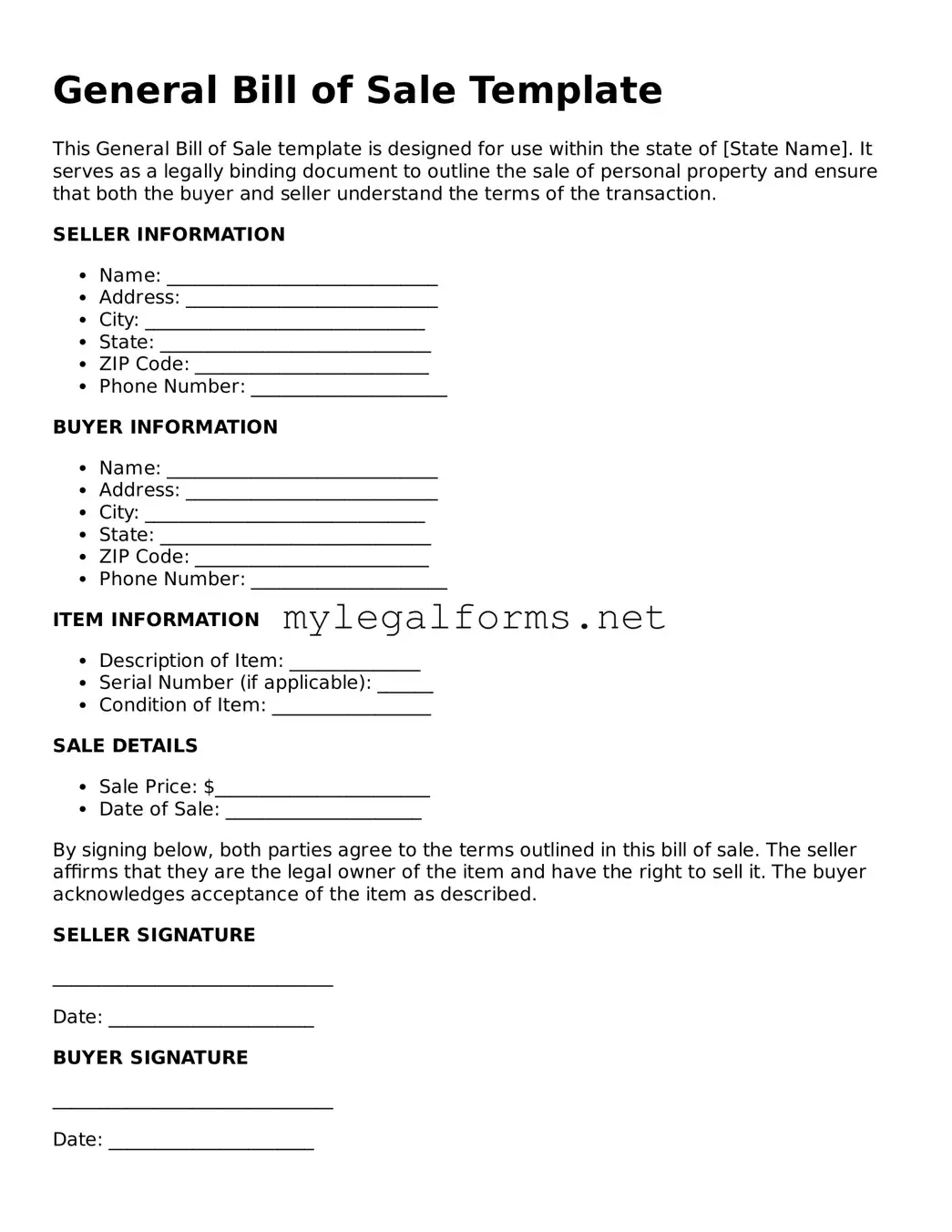General Bill of Sale Template
This General Bill of Sale template is designed for use within the state of [State Name]. It serves as a legally binding document to outline the sale of personal property and ensure that both the buyer and seller understand the terms of the transaction.
SELLER INFORMATION
- Name: _____________________________
- Address: ___________________________
- City: ______________________________
- State: _____________________________
- ZIP Code: _________________________
- Phone Number: _____________________
BUYER INFORMATION
- Name: _____________________________
- Address: ___________________________
- City: ______________________________
- State: _____________________________
- ZIP Code: _________________________
- Phone Number: _____________________
ITEM INFORMATION
- Description of Item: ______________
- Serial Number (if applicable): ______
- Condition of Item: _________________
SALE DETAILS
- Sale Price: $_______________________
- Date of Sale: _____________________
By signing below, both parties agree to the terms outlined in this bill of sale. The seller affirms that they are the legal owner of the item and have the right to sell it. The buyer acknowledges acceptance of the item as described.
SELLER SIGNATURE
______________________________
Date: ______________________
BUYER SIGNATURE
______________________________
Date: ______________________
This document is governed by the laws of the state of [State Name]. Ensure that you maintain a copy for your records and review local and state requirements for additional compliance.
